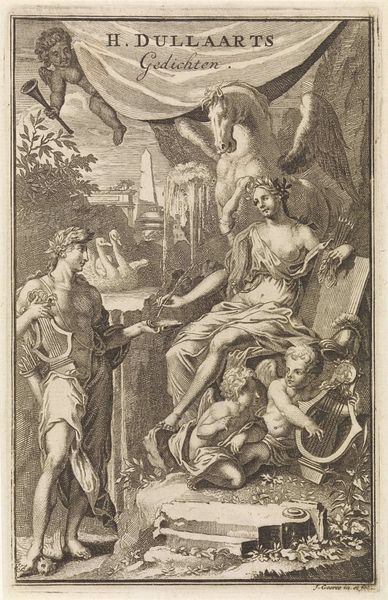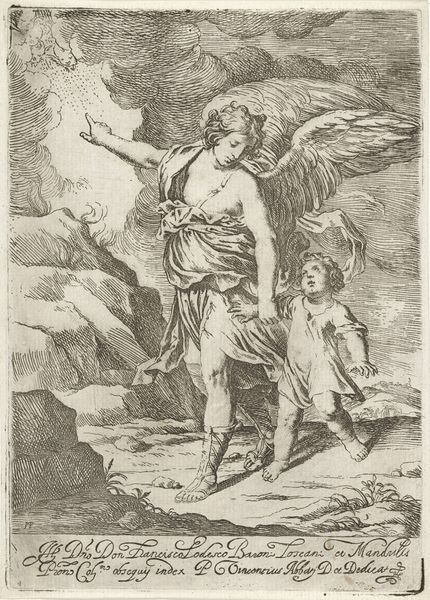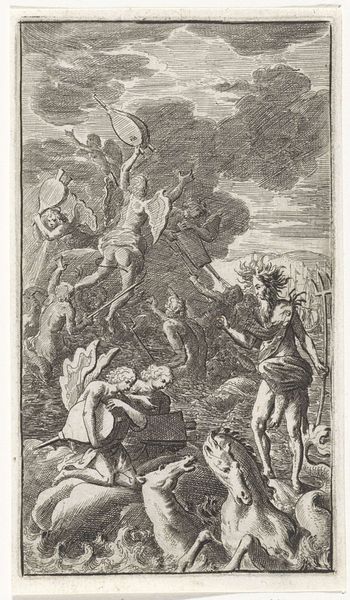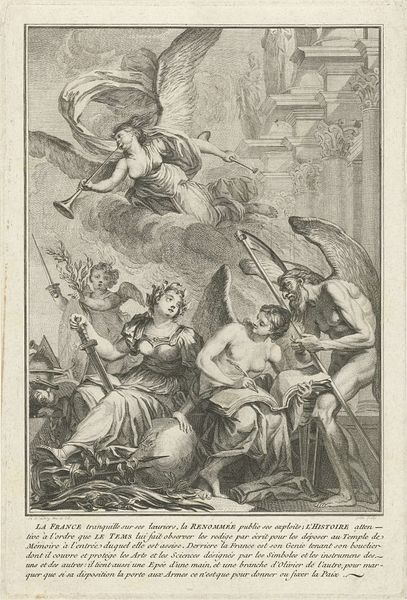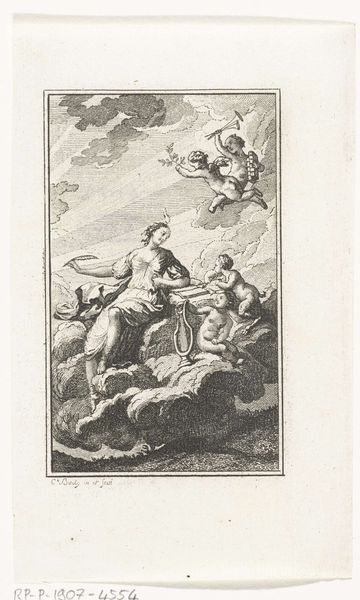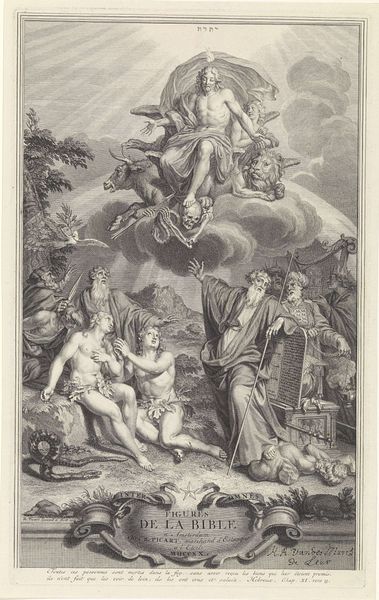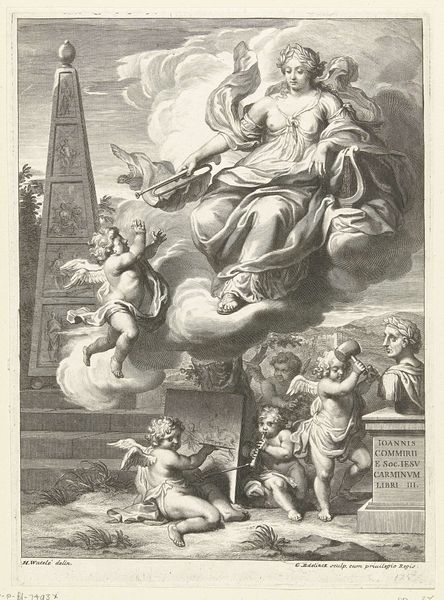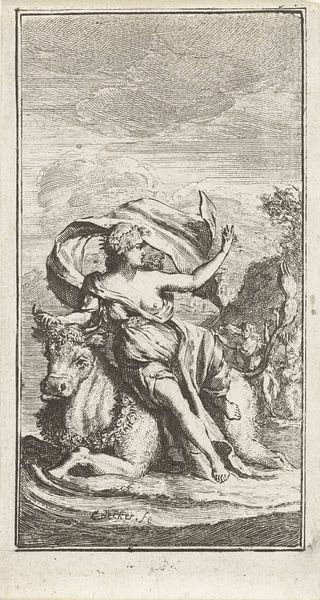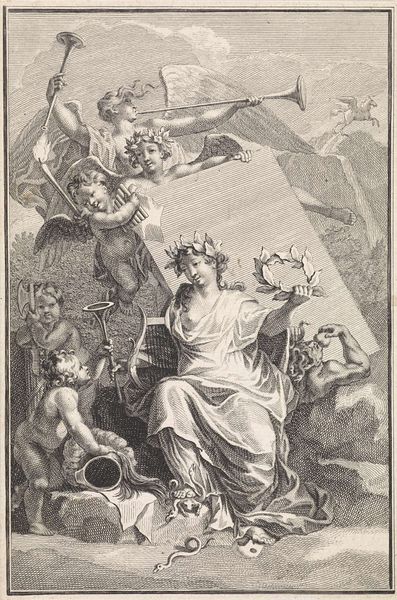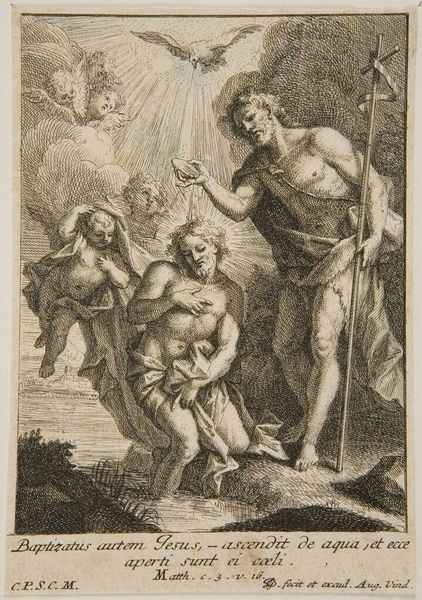
Dichter zit bij monument en ontvangt inspiratie van muze 1746 - 1814
0:00
0:00
#
light pencil work
#
pen illustration
#
pen sketch
#
pencil sketch
#
old engraving style
#
etching
#
pen-ink sketch
#
pen work
#
sketchbook drawing
#
pencil art
Dimensions: height 180 mm, width 134 mm
Copyright: Rijks Museum: Open Domain
Editor: So, here we have Carel Frederik Bendorp’s "Dichter zit bij monument en ontvangt inspiratie van muze", made sometime between 1746 and 1814. It looks like a pen and ink drawing… It's a delicate scene, almost ethereal, with the poet reaching up towards the muse. What jumps out at you when you look at it? Curator: The emphasis on *how* this image was produced – the etching technique – immediately draws my attention. Think about the engraver painstakingly transferring an image onto a metal plate, line by line. Each stroke embodies labor, the physical act of creation and reproduction of this drawing. Consider, also, how the subject is depicted, and to what degree the means and methods serve to express the theme of “inspiration”. Do you notice a class division inherent in its representation? Editor: Class division? How so? Curator: Well, who consumes art like this? Engravings were reproducible, more accessible than one-off paintings. Yet the subject is decidedly elite: a poet, bathed in divine inspiration, positioned far apart from any sense of toil or industrial action. The labor of Bendorp creating the engraving itself is somewhat ironic. Doesn’t that say something about the patronage systems in play during this period, the social and economic structures sustaining both artist and poet? Editor: That’s a perspective I hadn't considered. So the tension lies in the reproducible nature of the art form versus the aristocratic subject matter? Curator: Precisely! Consider how the artist's very labor – multiplied through the etching process – participates in a burgeoning art market and, simultaneously, romanticizes an elite class. How might this tension fuel the production and reception of art in subsequent generations? Editor: Fascinating. I came in seeing just a pretty picture, but now I’m thinking about the whole economic ecosystem behind it. Thanks! Curator: Indeed. It reveals the subtle yet forceful relationship between artistic production and social stratification of its time.
Comments
No comments
Be the first to comment and join the conversation on the ultimate creative platform.
